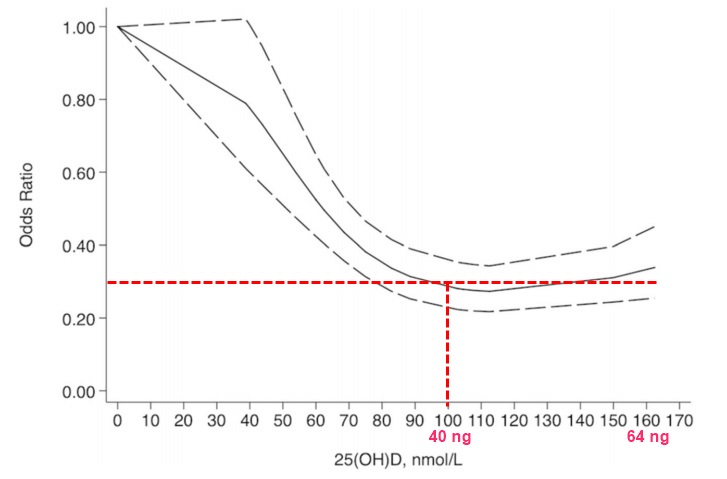Little Vitamin D benefit if not achieve a good level (T1D in this cases)
High-dose Vitamin D Supplementation on type 1 Diabetes Mellitus Patients: is there an Improvement in Glycemic Control?
Curr Diabetes Rev . 2021 Jan 5. doi: 10.2174/1573399817666210106102643
 ---
1. Overview Diabetes and vitamin D contains the following
{include}
Diabetic Epidemic
{include}
---
1. Overview Diabetes and vitamin D contains the following
{include}
Diabetic Epidemic
{include}
Franciane Trindade Cunha de Melo 1, Karem Mileo Felício 1, Natércia Neves Marques de Queiroz 1, Hana Andrade de Rider Brito 1, João Felício Abrahão Neto 1, Luísa Corrêa Janaú 2, Norberto Jorge Kzan de Souza Neto 1, Ana Luíza Aires Silva 1, Manuela Nascimento de Lemos 1, Maria Clara Neres Iunes de Oliveira 1, Angélica Leite de Alcântara 1, Lorena Vilhena de Moraes 1, Ícaro José Araújo de Souza 1, Nivin Mazen Said 1, Wanderson Maia da Silva 1, Gabriela Nascimento de Lemos 1, Márcia Costa Dos Santos 1, Lilian De Souza D Albuquerque Silva 1, Ana Regina Bastos Motta 1, Priscila Boaventura Barbosa de Figueiredo 1, Ana Carolina Contente Braga de Souza 1, Pedro Paulo Freire Piani 1, João Soares Felício 1
Background: Some authors evaluated the effect of VD on hyperglycemia in T1DM, but the results remain controversial. This study aims to analyze the effects of high-dose VD supplementation on T1DM patients' glycemic levels, maintaining stable doses of insulin.
Methods: Prospective, 12-week clinical trial including 67 T1DM patients, who were supplemented with high doses of cholecalciferol according to participants' VD value. Patients with VD levels below 30 ng/mL received 10,000 IU/day ; those with levels between 30-60 ng/mL received 4,000 IU/day. Patients who had not achieved 25(OH)D levels > 30 ng/ml or presented insulin dose variation during the study were not analyzed.
Results: Only 46 out of 67 patients accomplished the criteria at the end of the study . There was no general improvement in the glycemic control evaluated by HbA1c (9.4 ± 2.4 vs 9.4 ± 2.6, p=NS) after VD supplementation. However, a posthoc analysis, based on HbA1c variation, identified patients who had HbA1c reduced at least 0.6% (group 1, N = 13 (28%)). In addition, a correlation between 25(OH)D levels with HbA1c and total insulin dose at the end of the study was observed (r = -0.3, p<0.05; r=-0.4, p<0.05, respectively) and a regression model demonstrated that 25(OH)D was independent of BMI, duration of T1DM and final total insulin dose, being capable of determining 9.2% of HbA1c final levels (Unstandardized B coefficient = -0.033 (CI 95%: -0.064 to -0.002), r² = 0.1, p <0.05).
Conclusion: Our data suggests that VD is not widely recommended for glycemic control. Nevertheless, specific patients might benefit from this approach.
